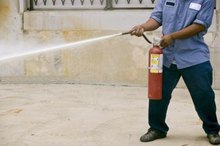What does fact checked mean?
At Healthfully, we strive to deliver objective content that is accurate and up-to-date. Our team periodically reviews articles in order to ensure content quality. The sources cited below consist of evidence from peer-reviewed journals, prominent medical organizations, academic associations, and government data.
The information contained on this site is for informational purposes only, and should not be used as a substitute for the advice of a professional health care provider. Please check with the appropriate physician regarding health questions and concerns. Although we strive to deliver accurate and up-to-date information, no guarantee to that effect is made.
Toxic Vapors Emitted From New Tires
Rubber used to make tires emits vapors known to cause illness and disease among those working with it. Rates of heart and lung diseases and certain cancers were higher for those in tire manufacturing over several decades, the Centers for Disease Control and Prevention notes 1.
Carbon Disulfide
Studies indicate that exposure to carbon disulfide, used in the manufacture of the rubber used in tires, leads to increased risk of heart disease 1. Exposure to carbon disulfide occurs by breathing vapors or consuming it in water or foods. According the Environmental Protection Agency, breathing high levels of carbon disulfide can be life threatening due to its effects on the central nervous system. Even breathing low levels over long periods can cause problems.
- Studies indicate that exposure to carbon disulfide, used in the manufacture of the rubber used in tires, leads to increased risk of heart disease 1.
- According the Environmental Protection Agency, breathing high levels of carbon disulfide can be life threatening due to its effects on the central nervous system.
Benzene
Health Problems Related to Natural Gas Leaks
Learn More
Benzene, an irritant, toxin and carcinogen, is used to make the rubber in tires. Benzene is suspected of causing various types of leukemia with prolonged exposure. Benzene fumes are released when the rubber is heated.
Carbon Black
Carbon black, used to blacken the rubber in tires, has caused serious respiratory effects after long-term inhalation, the Canadian Center for Occupational Health and Safety reported 3. Fine particles of carbon black accumulate in the lungs and can cause reduced lung function, emphysema or chronic bronchitis. “Limited animal and human evidence suggests that significant and potentially irreversible lung effects may occur with exposures to high airborne concentrations,” the report asserted.
Related Articles
References
Writer Bio
Elizabeth Ireland began writing professionally in 1997 as a reporter and columnist with the "Lancaster (Pa.) Sunday News." She now serves as the marketing and communications manager for Elizabethtown College, where she earned an associate degree in corporate communication. Ireland also covers rock climbing, cycling, the outdoors, home remodeling, relationships, cooking, higher education, fitness and the environment.









